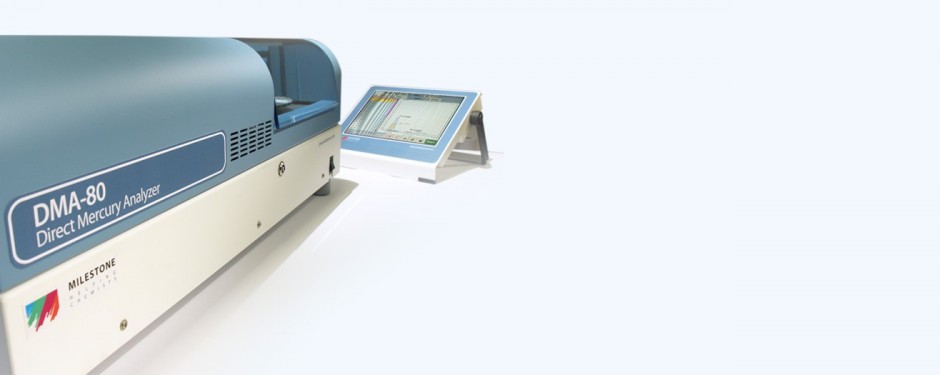The presence of Mercury represents one of the biggest challenges to the health and safety of our natural environment. It finds its way into the food chain of animals and humans and can provide significant health risks.
The three most common forms of mercury (elemental, inorganic and methylmercury) can all produce adverse health effects at sufficiently high doses.
Mercury testing, therefore, is required on a near-constant basis, forming an industry in its own right.
Mercury analysis – and the provision of mercury analysers that offer increasingly fast and efficient ways of carrying out analysis on large numbers of samples – is a significant business.
How dangerous is Mercury?
Mercury is deadly in large enough doses. Fortunately, in daily life, few people would ever come close enough to large enough quantities of mercury for it to be life-threatening.
However, it is considered more dangerous to unborn children, however, who are significantly more vulnerable to the effects of mercury. Pregnant women, therefore, are advised to avoid eating foodstuffs – typically fish – that are likely to contain mercury.
America’s Environmental Protection Agency (EPA) offers a significant resource to find out more about mercury in the environment. Closer to home, recent news articles – here and here – have demonstrated the growing concern about the presence of mercury in our environment and the risks it presents.
What are the symptoms of mercury exposure?
Mercury’s effects can be very subtle. Adults who have been exposed to too much methylmercury might begin to experience trembling hands and numbness or tingling in their lips, tongues, fingers or toes.
These effects can begin long after the exposure occurred. At higher exposures, walking could be affected, as well as vision, speech and hearing. In sufficient quantities, methylmercury can be fatal.
Mercury analysis, detection and testing challenges
One of the greatest challenges of Mercury analysis is the sheer scale of the operation. Speed, efficiency and high sample throughput are fast becoming prerequisite features of any mercury analyser.
At Analytix, we carry a range of mercury analysers that meet the needs of any modern mercury-testing laboratory.
These instruments not only offer a number of exclusive features that make them stand out in the market, but they are supported by a large number of application notes that help to demonstrate the range of uses available.
Mercury in the food chain
For example, the presence of mercury in our fish stocks is an ongoing challenge for the food industry, and one which requires constant monitoring to prevent a negligible health threat from becoming a serious issue.
The DMA-1 and DMA-80 direct mercury analysers from Milestone, distributed in the UK by Analytix, help laboratories in the food industry to optimise their mercury analysis processes.
Aquatic foods are amongst the most prone to Mercury contamination, and the DMA range allows for the fast and easy determination of Mercury in everything from salmon and tuna, shellfish such as oysters and mussels, and even alligator fat.
Clinical mercury analysers with no sample prep required
The direct mercury analysers from Milestone – the DMA-1 and DMA-80 – allow for fast, efficient and safe mercury analysis with no sample prep required.
DMA-80 doesn’t need any sample digestion or wet chemistry before the analysis takes place. Once the sample boats are placed on the auto-sampler tray, a pneumatic arm carries the boat inside the decomposition furnace where the sample is burned and mercury released in vapor form.
This makes the analysers perfect for clinical applications with substances such as blood, hair, nails and urine. Human hair, for example, can be analysed with an accuracy down to a mercury concentration of 558μg/kg.
Water mercury analysis: achieve EPA compliance
The FMA-80 Fluorescence Mercury Analyser is helping laboratories across the industry to optimise their mercury analysis processes.
The FMA-80 is a highly innovative automatic analyser designed for analysing mercury in water, wastewater and sample digests.
The system is based on an innovative and unique combination of detection technologies that allow an extremely wide working range between 0.2 ppt and 250 ppb mercury. Thanks to the integral dual amalgamators and AFS detector, the detection limit for mercury is as low as 0.02 ppt.
The FMA-80 is fully compliant to EPA 245.1, EPA 245.2, EPA 245.5, EPA 245.7, EPA 1631, EN 1483, EN 12338, EN 13806 and ISO 17852, and all methods that require mercury analysis by thermal decomposition and amalgamation.
Features lists
The DMA-1 and DMA-80 mercury analysers feature:
- No sample preparation required (no wet chemistry)
- Results in under 6 minutes with working range of 0.0015ng to 30,000ng Hg
- Compliant with EPA method 7473, ASTM D-6722-01 and D-7623-10
- Analysers can run on air eliminating the need for cylinder or house gases
- Choice of manual or autosampler systems
The FMA-80 mercury analysers feature:
- Results in under 2 minutes with detection limit 0.02 ppt
- Single variable speed pump eliminating need for multi-pump calibration
- Unique automatic reduction of sample volume after over-range analysis
- Autoblank feature between high and low content samples
- Integral dual gold trap amalgamator as standard
- Choice of 36 or 89 position autosampler
For more information about any mercury analyser from Analytix, contact us via the form on this page.

